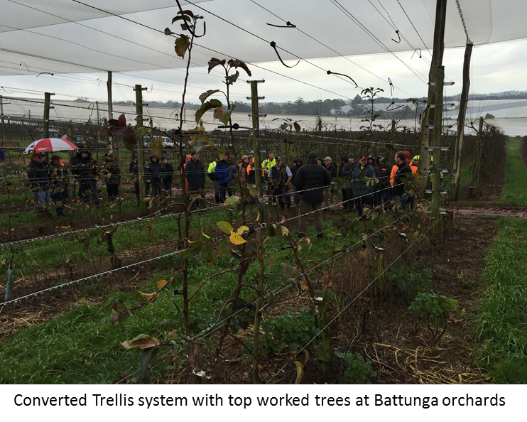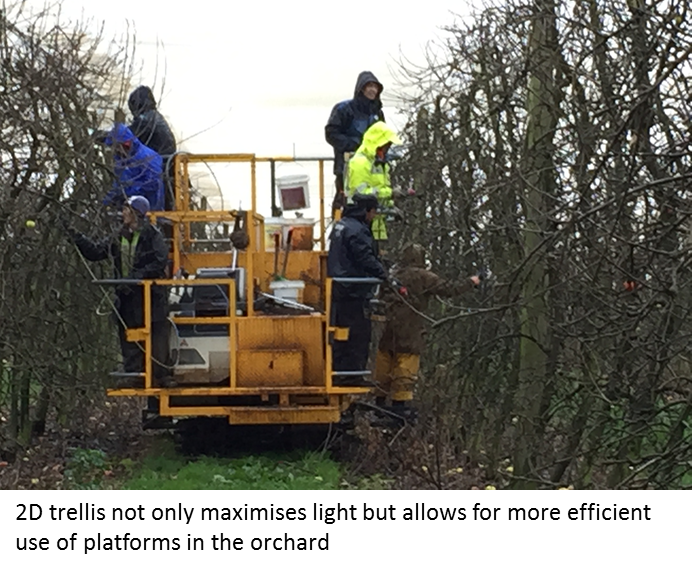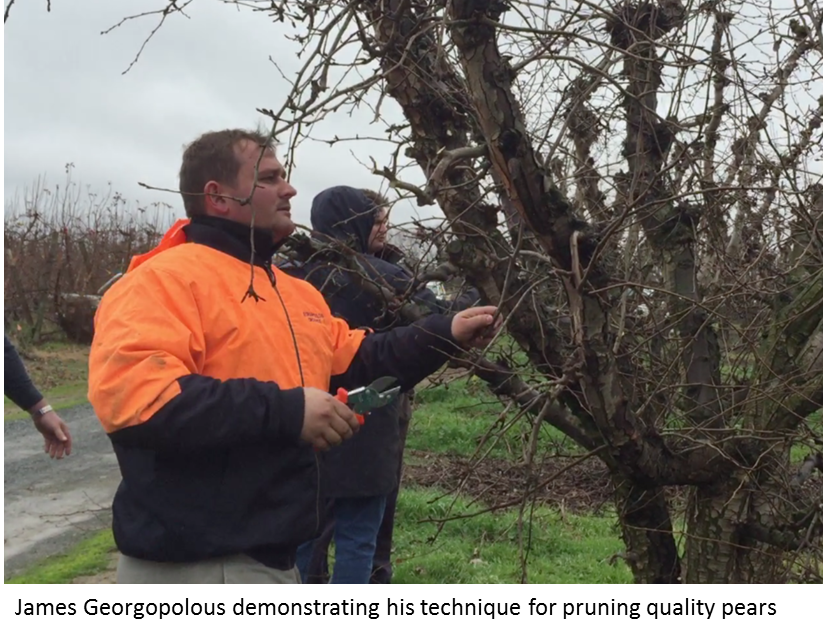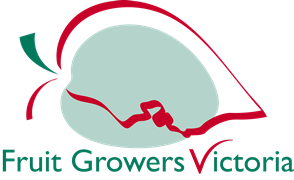Key Features of a Well Designed Trellis System for the Future
Learn about implementing well designed trellis systems by understanding what you want to achieve from them in terms of quality and production. Also consider how this trellis system will be suitable to incorporate forms of mechanisation such as platforms, etc. for efficiency gains
Some of the properties of well-designed orchards have:
- Selected suitable dwarfing rootstocks
- Canopy full of calm low vigour fruiting units
- Canopies that are narrow not deep
- Canopies that minimise the need for structural wood i.e. more available trellis wire
- Canopies that intercept a minimum of 70% of light or greater
- Trellis system must be able to support the extra production
There are multiple canopy options to choose from so you need to select the one that you can make work and will give your business the best economic return.The most common system is some form of two dimensional trellis.
It is imperative that the growers who are considering any future developments consider going through this thought process first so as they are maximising their resources, achieving the high quality production efficiently and taking as much risk out of their investment as possible.

Aims of Pruning for Both Quality and Maximum Production
Pruning is one of the most important components of crop regulation and if managed well can deliver improved profitability by adopting simple rules such as:
- Identifying where the best quality wood & buds are positioned on the tree
- Deciding how many buds the tree is capable of carrying by counting them first, by doing this you will end up closer to your production per hectare target
- Don’t compromise on light interception as this drives quality growth and production
- Balanced crops manages the vigour of the tree and the need to make as many cuts at pruning time
- Avoid making large cuts and keep them to a minimum if restructure of tree is required.
- With cuts that are required always start with removing 6 & 12 o'clock shoots; weak spent spurs; etc.
The benefit of doing the numbers first is that you may find you do not need to make as many pruning cuts and the instructions given to your staff are more easily understood.
Key Messages from the Guest Grower Presenters on Their Orchards
- Talk to people who have adopted new systems,
- Travel to other regions and see if they are doing it better and try it.
- Work smarter not just harder, by generating meaningful data you make better decisions.
- Engage with your industry
- Measure, monitor, improve Know your numbers and half the job is done
- Protect your business by managing as much risk as you can on farm such as labour on farm, pollination, etc.
- Be robust when assessing varietal performance
- Conduct on farm trials are essential to learn if you can do it!
- Pick a system that is ready for future technologies
- Don’t be afraid to convert existing planted trees into intensive trellised orchards through utilising top working to change varieties and increase the amount of well-designed trellis to accommodate the extra fruit wood you want to grow.

Two Key Points of Interest
The first point of interest that came from each region was the demonstration of a limb each being pruned of a Packham Pear tree by Matt Lenne, Brent Reeve and James Georgopolous, each of these growers produce quality pears and shared with all present their pruning techniques.

The second was a Top Work demonstration by David Finger at Battunga orchards through growers requesting to see what amount of skill was involved in the technique.
A special thank you must go to the growers that generously provided their orchards to facilitate the days were M.J. Hall and Sons from Mooroopna and Nine Mile Fresh at Warragul for allowing traffic into their orchards considering the wet conditions.
To view the presentations delivered on the day click here.


